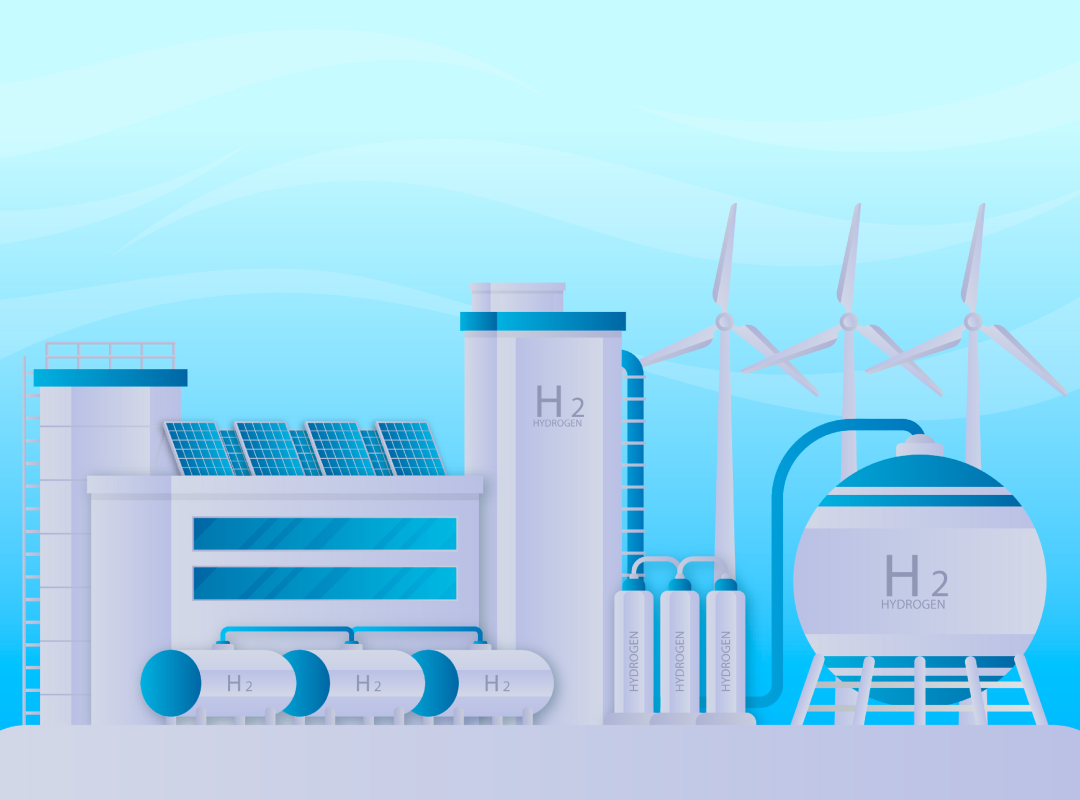Hydrogen is increasingly recognized as a clean and sustainable energy carrier due to its high energy density and zero carbon emissions when used in fuel cells. Among the various methods of hydrogen production, Proton Exchange Membrane (PEM) water electrolysis stands out as a promising technology for producing high-purity hydrogen from renewable energy sources. This review by S. Shiva Kumar and V. Himabindu delves into the recent advancements in PEM water electrolysis, focusing on the development of cost-effective electrocatalysts and the challenges associated with this technology.
Hydrogen Production Methods
Hydrogen can be produced from both renewable and non-renewable sources. Currently, about 96% of global hydrogen production comes from fossil fuels, primarily through steam methane reforming. However, this method produces significant greenhouse gas emissions. In contrast, water electrolysis offers an eco-friendly alternative, producing hydrogen and oxygen as byproducts without carbon emissions. Despite its advantages, water electrolysis accounts for only 4% of global hydrogen production, mainly due to economic challenges.
Water Electrolysis Technologies
Water electrolysis can be classified into four main types based on the electrolyte and operating conditions:
1. Alkaline Water Electrolysis (AWE): A well-established technology using alkaline solutions like KOH or NaOH as electrolytes. It operates at lower temperatures (30-80°C) but suffers from limited current densities and low energy efficiency.
2. Solid Oxide Electrolysis (SOE): Operates at high temperatures (500-850°C) and uses steam as the reactant. It offers high efficiency but faces issues related to material stability and degradation.
3. Microbial Electrolysis Cells (MEC): Utilizes organic matter and microorganisms to produce hydrogen. This technology is still in the developmental stage and faces challenges related to hydrogen production rates and internal resistance.
4. PEM Water Electrolysis: Uses a solid polymer electrolyte (e.g., Nafion) and operates at lower temperatures (20-80°C). It offers high current densities, fast response times, and high purity of hydrogen and oxygen.
PEM Water Electrolysis
PEM water electrolysis is particularly attractive due to its compact design, high efficiency, and ability to produce ultra-pure hydrogen. The process involves splitting water into hydrogen and oxygen at the cathode and anode, respectively, using a proton-conducting membrane. The key components of a PEM electrolyzer include:
– Membrane Electrode Assemblies (MEAs): Consisting of a membrane, ionomer solution, and electrocatalysts. The membrane, typically made of perfluorosulfonic acid polymers like Nafion, is crucial for proton conductivity and durability.
– Current Collectors: Typically made of porous titanium, these components facilitate the flow of electrons and protons while resisting corrosion in the acidic environment.
– Separator Plates: Made from materials like titanium or stainless steel, these plates separate the anode and cathode compartments and manage the flow of water and gases.
Electrocatalysts for PEM Water Electrolysis
The performance of PEM water electrolysis heavily depends on the electrocatalysts used for the hydrogen evolution reaction (HER) and oxygen evolution reaction (OER):
– HER Electrocatalysts: Platinum (Pt) is the benchmark catalyst due to its excellent activity and stability. However, its high cost has driven research into alternative materials like MoS2, Pd-based catalysts, and carbon-supported Pt-free catalysts.
– OER Electrocatalysts: Iridium oxide (IrO2) and ruthenium oxide (RuO2) are commonly used due to their high conductivity and activity. However, their high cost and limited stability have led to the development of mixed metal oxides and doped materials to enhance performance and reduce costs.
Challenges and Future Directions
Despite significant advancements, PEM water electrolysis faces several challenges:
– Cost: The high cost of noble metal catalysts and membrane materials remains a barrier to widespread adoption.
– Durability: Ensuring long-term stability and performance of electrocatalysts and membrane materials under harsh operating conditions is crucial.
– Efficiency: Improving the overall efficiency of the electrolysis process to make it economically competitive with other hydrogen production methods.
Future research should focus on developing low-cost, durable, and efficient electrocatalysts, optimizing cell components, and integrating PEM electrolyzers with renewable energy sources to enhance their commercial viability.
Conclusion
PEM water electrolysis holds great promise for sustainable hydrogen production. Recent advancements in electrocatalysts and cell components have significantly improved the efficiency and durability of PEM electrolyzers. However, further research and development are needed to address the remaining challenges and make PEM water electrolysis a commercially feasible technology for large-scale hydrogen production.
This review provides a comprehensive overview of the current state of PEM water electrolysis, highlighting the key advancements and challenges in the field. It serves as a valuable resource for researchers and industry professionals working towards the development of sustainable hydrogen production technologies.




